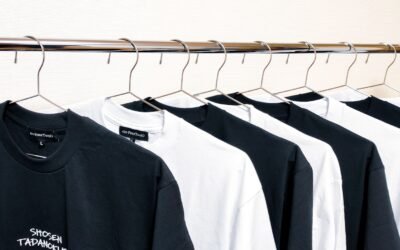When winter shows up, finding the right balance between staying warm and feeling comfortable gets tricky. Piling on thick layers might work outside, but indoors it can make things stuffy fast. That’s where smart layering starts to matter. Instead of only reaching for bulky sweaters or heavy jackets, we can build warmth from the base.
Sustainable t-shirts might not be the first thing that come to mind when the temperature drops, but they’re more useful in cold weather than most people expect. When layered well, they hold in comfort, bring flexibility to outfits, and reduce the need for more gear. Winter style doesn’t have to be stiff or complicated. It just needs the right base.
Why Sustainable T-Shirts Still Work in Winter
Lightweight, breathable, and soft, these shirts are surprisingly helpful during colder months. The secret sits in what they’re made from. Materials like organic cotton and bamboo blends hold warmth close to the skin without trapping too much heat.
They wick moisture better than synthetic pieces, which helps keep you dry under thicker layers like knits or outerwear. Rather than relying on heavy fabrics at every level, starting with breathable sustainable t-shirts helps your body regulate temperature more evenly. That means fewer chills outside and less sweat once you’re back indoors.
Most importantly, they don’t stretch out or wear thin too easily, so they hold up through season after season. When we stick to basics that last, fewer wardrobe changes are needed between early winter and deep freeze days.
Each Save Mother Earth t-shirt includes original artwork that supports conversations around conservation, with every purchase helping fund waterway protection and energy efficiency programs.
Building Warm Layers from the Inside Out
Before reaching for that big winter coat, it helps to plan what’s underneath. A good t-shirt layer can lock in warmth when it’s cold and allow airflow when it’s not.
- Start with a fitted or base-style t-shirt close to the body.
- Add a flannel or lined button-up that brings both texture and warmth.
- Stack a thicker layer like a crewneck sweatshirt, fleece pullover, or cardigan next.
- When going outside, top it off with a warm coat or insulated vest.
This kind of layering lets you drop or add parts throughout the day. If you work in spaces with drafts or temp changes, you won’t have to change your clothes completely. Thin-to-thick stacking avoids too much bulk and allows for better movement, especially if you’re sitting for long stretches or going in and out of buildings.
Choosing Colors and Prints That Match Winter Styles
Just like material, winter colors play a big role in how seasonal your outfit feels. Heavier clothes tend to come in neutral or rich tones, and the shirt underneath should match that feel.
- Stick to grounded winter colors like navy, charcoal gray, dark green, or deep red.
- Pair solid shirts with flannels or cardigans in patterns that fit the tone of winter, think checkered, speckled, or textured weaves.
- If your shirt has a design or print, choose something nature-inspired or minimalist.
A bottle-green t-shirt under a beige sweater or a navy tee against a forest-green flannel matches the season without being boring. Color makes a big difference without affecting comfort or warmth.
Day-to-Day Outfit Ideas for Cold Mornings and Late Nights
When you start with a sustainable t-shirt, the rest of the outfit becomes easier to build around. Whether you’re staying inside or stepping out, there’s a way to stay warm without heavy gear all the time.
- For indoor days, like working from home or running errands, wear a fitted t-shirt with a thick hoodie or crewneck and a pair of joggers or warm leggings.
- In classroom or casual settings, layer a lightweight shirt under a zip-up vest or long waterfall cardigan.
- On cold nights, pair a darker graphic tee with a wool jacket, jeans, and insulated boots. Don’t forget gloves and a knit beanie to complete the look.
- If it’s snowing or wet, add a waterproof parka over your layers and swap in taller boots or water-resistant shoes.
Mixing light clothes with warmer pieces helps move between indoors and outside without feeling stiff or weighed down.
Cold Weather Care for Long-Lasting Basics
Winter’s not rough on just your skin. It’s tough on clothes too. Learning simple care tips keeps your favorites feeling soft and lasting longer, which matters more when you’re layering often.
- Wash shirts in cold water. It helps keep the fabric strong and colors from fading.
- Avoid dryers when possible. Hang dry or lay flat to avoid shrinking and fabric break-down.
- Store clean, folded shirts away from heaters or direct sunlight to avoid damage.
- Spot-treat little stains instead of overwashing a whole shirt.
These care habits stretch the life of your basics, especially when you’re rotating through a smaller cold-weather wardrobe.
Keep Warm Without Adding Clutter
Winter doesn’t always call for more clothes. Sometimes, it just takes smarter layering with pieces we already trust. Starting with soft, flexible base layers gives us the comfort we want without adding bulk we don’t need.
By using sustainable t-shirts as the foundation, we keep our wardrobes simple while staying warm through every cold snap. This makes dressing each morning easier and avoids cluttered closets filled with things we rarely wear. A few reliable pieces and some thoughtful combinations go a long way. When comfort, warmth, and reusability work together, winter outfits feel better.
At Save Mother Earth, we create clothes that look good, feel great, and are built to last season after season. As winter arrives, taking care of your essentials means your entire wardrobe works harder without the need for extra pieces. Whether you’re ready to refresh your layers or find new favorites, browse our collection of sustainable t-shirts designed for comfort, durability, and easy care. Each purchase supports the environmental causes we champion. Have questions or need help finding the perfect fit? Reach out to our team today.









